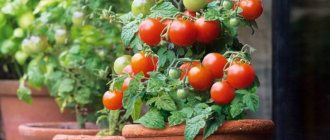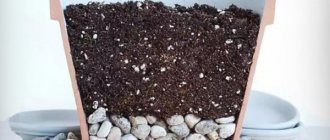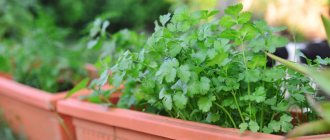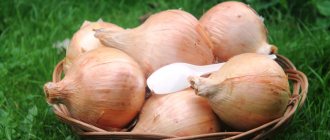Radishes are an annual cold-hardy plant, rich in vitamins and loved by many for their pleasant, slightly spicy taste. The crop is often planted in gardens, but not many people realize that growing radishes on a windowsill is also quite possible. The plant is easy to plant and care for and does not require special conditions, so anyone, even a novice vegetable grower, can grow radishes at home. At the same time, you can enjoy this healthy vegetable not only in the spring, but throughout the year. You can find out whether it is possible to plant radishes in an apartment and how to do it on our website.
When to plant and is it possible in winter?
Radishes can be grown at any time of the year. The main thing is to remember a few important points. This vegetable is considered cold-resistant and can safely tolerate light cold, but excess heat is detrimental to it. The ideal temperature for growing this crop is from +12 to +18 degrees Celsius.
Suitable daylight hours are 10–12 hours. In winter, when there is little sun, you can compensate for the lack of light using fluorescent lamps.
In natural light conditions, it is better to sow the plant at the end of January if the windows face south, and in mid-February if the windows face west or east.
How to choose containers for radishes on the windowsill at home
The choice here is quite wide: from industrial manufacturers to homemade preparations. In this case, any container is good: boxes made of wood, plastic boxes, containers, cups or boxes, paper cups, plastic cassettes for seedlings. So everything will depend on your possible reserves after the initial use of such containers or on the ability to buy it or make it yourself.
Photo: Any container is good for growing.
What to give preference to? An important point will be the amount of products grown. If you want to enjoy ripe crispy radishes more often, use larger boxes. If you decide to occasionally pamper yourself or your children with fresh vitamins, then you should take a closer look at individual cups or cassettes with separate cells.
The latter case has its advantages:
- There will be no need to thin out the seedlings, and the root crops will grow strong and quite large.
- The possibility of transferring infection from plant to plant becomes unlikely, unlike thickened crops in large boxes. Undoubtedly, the most environmentally friendly and beneficial for plants are wooden boxes. When selecting the right container, be sure to consider the width of your window sills.
- It has been experimentally established that the height of the sides of the selected container should not be lower than 14 cm. Depending on the variety, the recommended sowing density is: 3x3 or 7x7 cm.
Photo: Growing in plastic cassettes.
Any container must be disinfected before use. Everything is individual here: if you can thermally treat it with hot water or steam, then go ahead. If the material is not suitable for such activities, treat it with any disinfectant, at least potassium permanganate.
| Important. When moisture stagnates, there is a high probability of developing fungal diseases, the most dangerous of which is blackleg, which can ruin all your efforts even at the seedling stage. To avoid this, make holes at the bottom of the containers if they were not provided there initially upon purchase. |
Which variety to choose for home growing?
First you need to select the seeds. It is better to buy them in specialized stores and choose early ripening varieties that ripen in 16–25 days. Among these varieties:
- "18 days" . The ripening period is 18–20 days. Red fruits in the form of a cylinder with delicate, pleasant-tasting pulp.
- "Firstborn" . Harvest in 17–19 days in the form of round dark red radishes with juicy, tender pulp.
- "French Breakfast" . One of the most popular varieties with long, rather large red roots with a mild taste. They ripen in 23–25 days.
- "Heat" . A hybrid that produces a harvest in an average of 25 days. The fruits are small. For those who want to grow radishes on a windowsill, “heat” is often recommended.
- "Camelot" . Ripens in 23 days in the form of round, bright red, medium-sized fruits. The advantage is that this variety does not require much light.
- "Duro" . Ripens in 23–25 days, large red fruits, slightly spicy flesh, does not crack.
- "Diego" and "dabel" . These varieties ripen in 18 to 25 days and are distinguished by a very crisp harvest.
How to choose the time?
People often ask: is it possible to plant radishes in the spring, for example, in April, or in the winter, as they grow at this time at home on the window?
It should be noted that radishes can be planted on the windowsill at any time of the year . Even in winter, with proper care, the fruits grow quickly and have the same taste and beneficial qualities as the spring harvest.
The conditions for proper care include the presence of a suitable temperature and daylight hours.
Preparation
- It is recommended to rinse purchased seeds: fill them with water, as a result of which high-quality seeds will settle to the bottom of the vessel, and unnecessary debris will float to the surface.
- After washing, the seeds are dried on a paper napkin.
- Then you should visually inspect the seeds and get rid of those on which a gray coating is visible - a clear sign of fungal infection.
You can buy ready-made soil in specialized stores or prepare it yourself by mixing soil and peat in a 1:1 ratio. The good thing about ready-made soil is that it does not need to be further processed to prevent the appearance of pests.
Soil for radishes
It is equally important to choose the right soil for growing radishes in an apartment. This vegetable prefers light soil with a pH of 6.5-7. In acidic soil, radishes can be affected by such a terrible disease as clubroot. For this reason, not every garden soil is suitable for growing it.
If you have been growing seedlings and have ingredients left over from growing them, you can prepare the soil mixture yourself. To do this, combine fertile soil, humus and sand in equal quantities. The composition of soil for radishes can be as follows: compost, fertile soil, sand and peat (ratio 2:1:1:1).
If you do not have the desire or ability to prepare soil for radishes yourself, you can buy soil for cabbage at the store. Radishes and cabbage belong to the same family - Brassicas, so they have approximately the same need for nutrients.
If you prepared the soil yourself, then it needs to be disinfected before sowing the seeds. This preventative measure will protect your radishes from fungal diseases. The simplest methods of disinfection are to spill the soil with boiling water or a weak solution of potassium permanganate. Leave the disinfected soil for several hours. After this, add a solution of Fitosporin-M to the soil mixture - 0.5 tbsp. Dilute the drug in 5 liters of water.
Landing algorithm for beginners
When everything you need is ready, you can start planting. To do this you need:
- Cut grooves in the soil to a depth of about 1.5 cm.
- Gently pour warm water over them.
- Sow seeds at a distance of 3 cm.
- Cover the crops with soil and water again.
- Place the boxes on the balcony or window sills at a temperature of about 18–20 degrees Celsius.
- Cover with plastic wrap and wait for germination.
- After the sprouts appear (on 3–4 days), remove the plastic and keep the radishes for three days in a cool (8–10 degrees) place. This is necessary to harden the plant. Then return them to their original place.
When to harvest radishes?
Grown root vegetables can be harvested as soon as they are formed and larger. Usually at this time their tips begin to peek out from under the ground (see photo below). It is not worth keeping radishes in the ground for too long; in this case, they become coarse, begin to taste bitter, and become unsuitable for food. After harvesting, the harvest should be washed, dried and, if there is only a small amount, put in the refrigerator in a plastic bag. In this case, you cannot tie the bag. Air must flow to the fruits.
On a note ! If there are a lot of radishes that have ripened, they can be stored in a wooden box in the cellar, first sprinkled with river sand. In this case, you cannot wash it!
Growing in egg trays
There is another way of planting - in egg cassettes with separate cells. This method has a number of advantages:
- convenient to sow;
- seedlings do not need thinning;
- no weeds;
- the fruits grow even and beautiful due to the fact that they do not touch each other.
The downside will be the need for more free land area.
With this method, it is necessary to choose shade-resistant varieties (for example, “18 days”). Before planting, the cassettes should be disinfected, the bottom of each cell should be cut off and the cassette should be installed with the holes down in a box with soil.
Prices for egg cassettes
When purchased at retail, the average price of one cassette for 30 cells is 1–2 rubles.
Harvesting and application
For one variety to fully ripen in the garden, 18 days are enough, while the other produces a harvest only after three weeks. But at home, the ripening time of root crops is slightly delayed. It is difficult to unequivocally answer the question of how long it takes to grow radishes at home.
The growing season is short, no more than 25-28 days (if we are not talking about late varieties). The final growing season depends on the growing conditions. It is important not to miss complete ripeness, otherwise, when overgrown, the peel will begin to become rough and the root crop will crack.
Of course, you can’t grow radishes in large quantities in an apartment. Therefore, the harvested crop is used in private households for preparing all kinds of dishes.
How to care for young radishes?
It is necessary to loosen the soil and hill up the sprouts every 2-3 days until they become stronger and begin to grow. Water as needed: the soil should be neither too dry nor too wet. As a rule, this is done every other day.
When growing in a common container, sometimes it becomes necessary to thin out the beds so that the distance between plants is about 5 centimeters. When thinning, you must use sharp scissors with caution; do not pull out the sprouts.
At night, to prevent freezing, you can cover the radishes with cellophane film. Since radishes are a short-day crop, if the day length exceeds 12 hours, it is advisable to cover the bed with an opaque material.
Common problems
The growth of tops is a sign of improper development of the root crop, which can result from:
excess watering and fertilizers;- too hot climate;
- lack of light;
- placing seeds too deep in the soil.
You can try cutting off the tops completely to give the fruits a chance to grow.
- Bolting (flowering) is excessive loosening of the soil and thinning of crops.
- Inexpressive taste. The reason is excess fertilizer.
- Bitterness. The reason is uneven watering.
- Cracking of fruits. The reason is the difference in soil moisture and dry air.
For proper growth, radishes need sufficient watering and the right temperature. To avoid problems when growing radishes, you must follow the recommendations for planting seeds and caring for seedlings. Growing radishes on a windowsill will allow you to eat this vegetable rich in vitamins and minerals all year round.
Pests and diseases
Due to the short ripening time of radishes, pathogenic fungi, bacteria and viruses, insect eggs and larvae, as a rule, do not have time to go through the incubation period and cause significant harm to the seedlings. However, bugs, worms and other insects can be contained in soil brought from the garden.
As a rule, radishes are damaged by insects such as:
- cruciferous flea beetles;
- cabbage moth;
- cabbage whites;
- scoop;
- click beetles.
But most often pests are found in plants that grow outside.
At home, pests rarely threaten garden beds. Radishes have no specific diseases, but they can suffer from:
- so-called white rust (essentially a fungus);
- keels;
- mosaic virus.
The best prevention of such diseases is proper plant care and maintaining cleanliness in the beds. Chemicals are used only as a last resort. It is recommended to inspect the beds regularly.
General signs of infection of a crop with any disease:
- curled and yellowed leaves, sometimes with cankers;
- dark formations on the stem;
- holes in the root.
Factors that can trigger the onset of the disease:
- excessive watering;
- air temperature is too high;
- increased soil acidity.
Inspect the seeds and soil before sowing, as they may initially contain pests. Pay attention to the soil that you add to the garden bed during the process of caring for the plant.
If you follow all the recommendations, you can grow a very tasty and healthy product at home. Radishes grown on your own balcony or windowsill will become a source of essential vitamins in spring and an excellent addition to many dishes.
Sowing procedure
To plant radishes at home, you need to take containers (cups, pots), pour boiling water or a weak solution of potassium permanganate. Place a layer of drainage on its bottom, for which you can use, for example, brick chips or pebbles. Pour the prepared soil into the container. Now you should start sowing.
To do this, make longitudinal strips in the soil with your finger or a small wooden stick, 1.5-2 cm deep . Place the seeds. In order for the radish to germinate and grow quickly, gaps of 5-6 cm . Planting radishes more closely is permitted, but in this case it will need to be thinned out in the future. The top of the planting material should be sprinkled with earth and sprayed with water from a spray bottle. Next, cover the container with film.
Radish shoots
There is another way to grow radishes on a windowsill - through sowing in egg trays. This method allows you to reduce the burden of caring for the plant. You don't have to mulch the soil or remove weeds. All care comes down to systematic watering.
It is recommended to act step by step, like this:
- Disinfect paper egg trays with alcohol (or heat in the oven at 70 degrees).
- Cut off the bottom of each cell; the result should be round holes of small diameter.
- Place the container in a suitable sized plastic box.
- Place small stones at the bottom of the prepared container.
- Fill the drainage layer with prepared soil.
- Place egg containers in a box on top of the soil.
- Make a hole in the ground in each cell up to 2 cm deep.
- Place the seed and cover with soil.
- Sprinkle the planting material with sand and spray with water.
- Cover the plantings with film.
Please note that trays with soil must be immersed in the box so that the soil is in each cell. Regardless of how radishes are planted at home, after sowing they need to be moved to a warm place. After germination, boxes or egg trays with seedlings should be taken to a cool place.
Planting radishes in egg trays
Choosing a radish variety
You need to be especially careful when choosing a radish variety to grow at home. It is best to choose early ripening varieties that are less susceptible to drought and lack of light. After all, not every variety can take root in an apartment. Let's look at the most suitable varieties in the table:
| Variety name | Description | Where can I buy | average price | ||
| Moscow | Saint Petersburg | ||||
| Zarya | Early variety. The period from sowing to harvesting is 20-26 days. The root crop is red-crimson in color, round or elliptical in shape. Productivity from 1.1 to 2.5 kg/m2. |
|
| 15-17 r. | |
| Early red | Early variety. The root crop is huge in shape and dark red in color. From sowing to full harvest 20-25 days. Productivity up to 1.6 kg/m2 | 8-18 r. | |||
| Greenhouse Gribovsky | The root crop is round-flat in shape, dark red in color. The period from full germination to the onset of technical ripeness is 27-32 days. Marketable yield is 1.7-2.8 kg/m2. | 10-17 r. | |||
| 18 days | Early ripening variety. The fruits are cylindrical, pinkish-red, with white tips. Harvest in 18-20 days. after the first shoots appear. Productivity up to 3.8 kg/m2. | 15-19 r. | |||
| Quart | The root crop is round in shape and red in color. It has soft white flesh. The ripening period is about 25 days. Productivity 1.7-2.1 kg/m2 | 15-20 rub. | |||
Preparatory work with step-by-step actions
Having selected a container that matches the size of the window sill, boxes and plastic cups are suitable for this, begin sowing. If you purchased a wooden box, it must be placed on a pallet.
The seed composition is soaked in potassium permanganate for three hours and the following steps are carried out:
- holes are made in the ground with a depth of 2 cm.
- the soil is pre-wetted slightly
- Seeds are planted in the recesses; if sowing is carried out in a box, a distance of 5 cm from each other is provided
- sprinkle with soil and water
- cover the planting, film or agrofibre will do
Then they constantly monitor and adhere to the temperature regime during all stages of seed germination.
Features of such cultivation
Radishes can grow at low temperatures , so the climatic conditions in the apartment are suitable for this vegetable. At a temperature of +20 C the plant will be comfortable.
When exposed to elevated temperatures, the root crop becomes lethargic and tasteless, the plant itself stretches and takes on an irregular shape.
The best period to start planting radishes at home is winter . The process of ripening radishes takes very little time, and it is possible to harvest the delicious vegetable 2 times.
Origin and description of culture
Radish means "root" in Latin. East Asia and the Mediterranean are the birthplace of the famous vegetable. Radishes have been grown in China for more than three thousand years. The ancient Greeks honored Apollo by presenting its fresh fruits on a golden platter. The vegetable was brought to Europe by the Italian merchant traveler Marco Polo.
Did you know? Radishes were grown on the International Space Station, selected for their short growing season and the ability to eat the fruits and leaves.
An annual root vegetable of the cabbage family, genus ─ radish. Round or oblong in shape, sharp in taste, juicy, dense in consistency. Through selection of radish, varieties of red, purple, white, pink, and yellow shades have been developed. There are red fruits with white tips, white ones with pink flesh.
The taste of radish is affected by the presence of mustard oil. The root vegetable is eaten whole, in salads, in combination with other vegetables: cucumbers, tomatoes, herbs. From young, non-thorny leaves, you can cut a vitamin salad with the addition of spring greens and the radish fruit itself.
The vegetable crop contains vitamins B, PP, phytoncides and minerals. Fresh root vegetables and salads are useful for improving peristalsis, for diabetes and obesity, and have choleretic properties.











